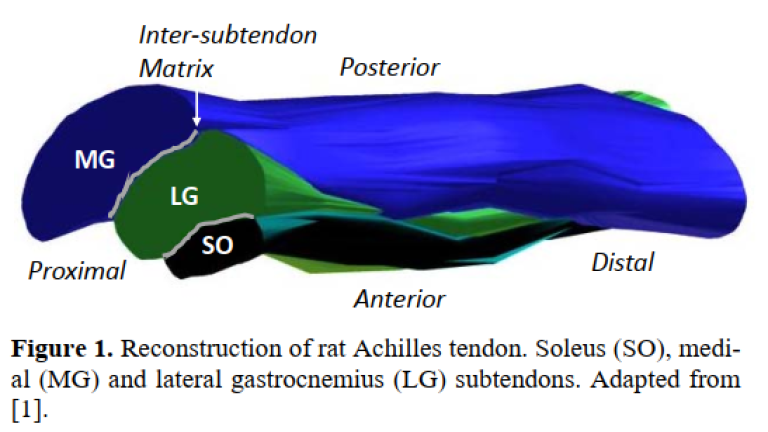In this project, the structure-function relationship and mechanobiology of tendons is studied in health and following injury. We focus on multi-muscle tendons (e.g. Achilles tendon), the behavior of their subtendons, the composition of the intermediate matrix, as well as the response of tendons to mechanical loading.
Our musculoskeletal system contains several muscle groups in which different muscles share a tendon. The most well-known are the triceps surae muscles, sharing the Achilles tendon.
The structure and mechanical properties of these tendons have been studied extensively, considering them as one unit. However, these shared tendons consist of multiple subtendons with a non-collagenous matrix in between them (Fig. 1).
- What are the mechanical consequences of such structural organization?
- What is the composition of this matrix?
- How is this modified with injury and aging?
These questions are addressed in the first project, which focusses on the structure function relationship of tendons.
Tendon injuries are one of the most frequent (disabling) injuries of the locomotor system affecting in particular a young population of active people.
Chronic impairments are usually attributed to repetitive motion and overuse. However, the mechanisms, cell biology, and pathophysiology of tendinopathy are poorly understood.
- How does a tendon regenerate and when should intervention be implemented?
- When and how often should loading regimes be applied in rehabilitation protocols?
- What should these loading regimes look like in terms of amplitude, frequency and duration?
The second project (co-PI Theo Smit) is aimed at obtaining a more quantitative understanding of tendon homeostasis, degeneration and repair, using a loaded tendon culture system.

Researchers involved in this project
- Professor dr. Taija Finni;
- Professor dr. Hazel R.C. Screen;
- Connor C. Gains.



